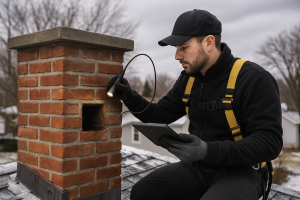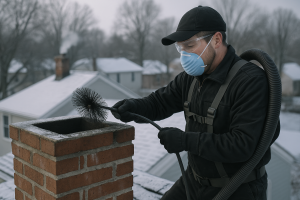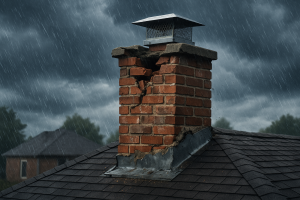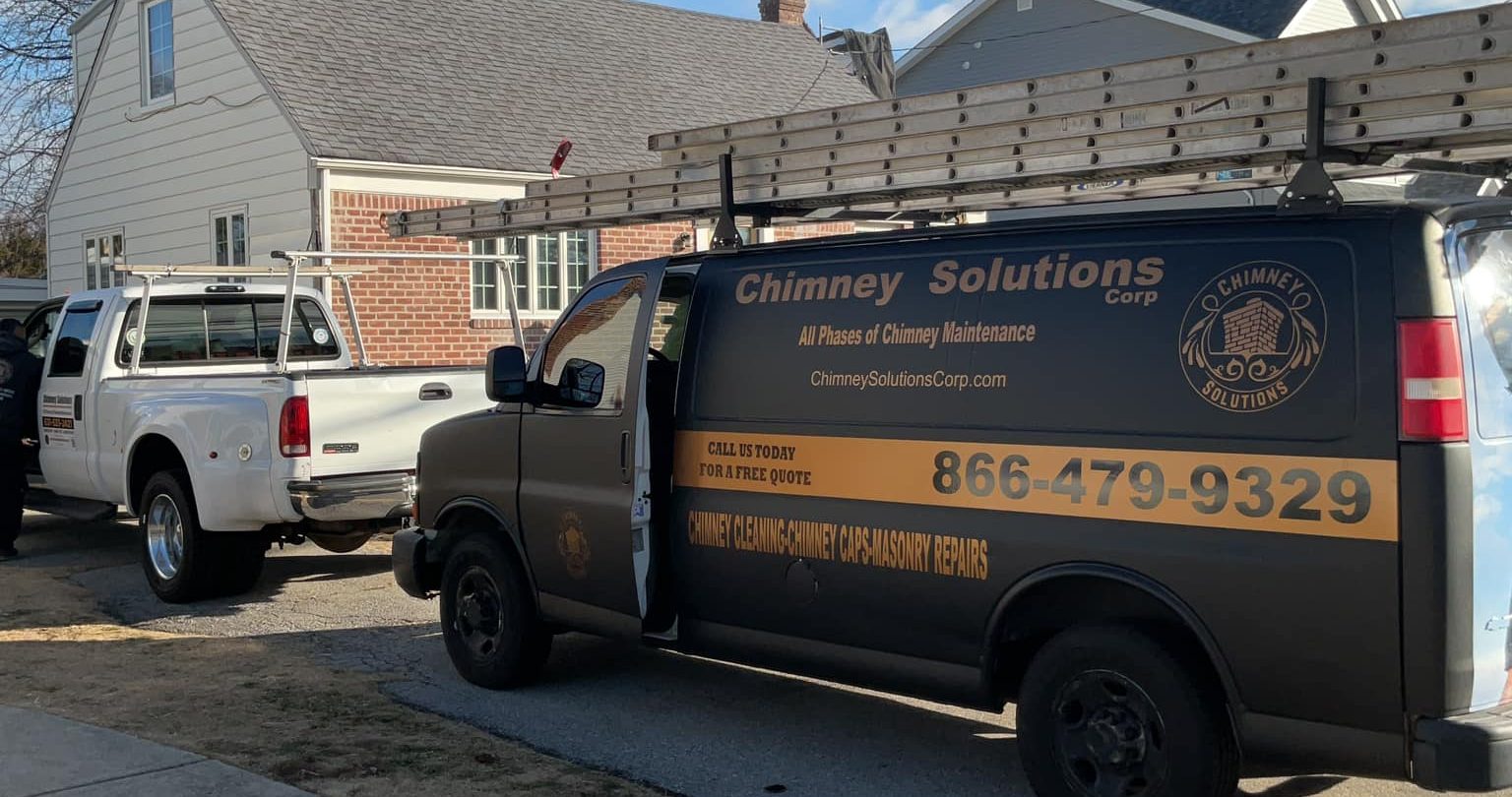Your chimney liner may be out of sight, but it plays a vital role in keeping your home safe, efficient, and structurally sound. Whether you’re using a wood stove, gas fireplace, or a traditional masonry fireplace, the liner inside your flue is a protective barrier that shields your chimney walls from combustion gases, creosote buildup, and intense heat. Knowing when to replace your chimney liner is not just about preventing wear—it’s about ensuring proper function, avoiding carbon monoxide leaks, and protecting your living space from dangerous flammable materials and toxic gases.
What Is a Chimney Liner?
A chimney liner is a pipe-like barrier installed inside your chimney flue. It guides smoke, gases, and other byproducts from your heating appliance safely out of the home. Liners can be made of various materials, such as clay tiles, aluminum, or stainless steel, and are considered an essential component of a modern chimney system.
Why Chimney Liners Matter
Without a properly functioning chimney liner, your chimney becomes vulnerable to structural damage, masonry deterioration, and dangerous gases seeping into your home. Liners are required by modern building codes because they:
- Prevent carbon monoxide poisoning
- Improve heating efficiency
- Reduce fire risks from heat transfer to adjacent woodwork
- Contain corrosive byproducts that can erode masonry
For more on chimney safety standards, refer to the National Fire Protection Association’s (NFPA) chimney inspection guidelines.
Types of Chimney Liners
Choosing the right type of chimney liner depends on your fuel type, appliance, and chimney design.
Clay Tile Liners
- Common in older homes and masonry fireplaces
- Inexpensive but prone to cracking over time
- Difficult to repair if damage occurs
Stainless Steel Liners
- Ideal for liner replacement
- Excellent for use with wood stoves or gas appliances
- Resistant to corrosion and high heat
- Available in rigid or flexible designs
Aluminum Liners
- Lightweight and cost-effective
- Typically used for gas furnace venting
- Not suitable for high-heat appliances like wood-burning stoves
Signs Your Chimney Liner Needs Replacing
Early detection of chimney liner issues can save you from expensive repairs or worse—house fires.
1. Cracks or Spalling
If you have a clay tile liner, look for chunks of tile, cracks, or black, tar-like substances accumulating in the firebox or smoke chamber.
2. Excess Smoke or Odors
Excess smoke, unusual odors, or smoke backup into the room could indicate liner deterioration or blockage. These signs often go hand in hand with poor drafting and accumulation of creosote.
3. Moisture or Condensation
Condensation issues in your flue can lead to corrosive byproducts forming, which weaken metal liners and destroy clay liners.
4. Carbon Monoxide Alerts
If your carbon monoxide detector goes off or you experience symptoms like dizziness, headache, or runny nose, your chimney liner may not be venting combustion gases effectively.
Common Causes of Chimney Liner Damage
Several conditions can lead to chimney liner failure:
- Chimney Fires: Even a minor chimney fire can crack liners or cause metal chimney liners to warp.
- Creosote Buildup: Igniting acidic creosote deposits can severely damage liners.
- Corrosion: Metal liners exposed to moisture or toxic gases break down over time.
- Improper Installation: Incorrect sizing or use of cheaper quality materials can lead to operation malfunction.
When to Replace Your Chimney Liner
Chimney liners generally last 15–20 years, depending on the material and maintenance. Here’s when a liner replacement is essential:
After a Chimney Fire
Even if the fire seems minor, always schedule a professional chimney inspection after a fire. According to the CSIA (Chimney Safety Institute of America), post-fire inspections can uncover hidden damage to liners and masonry structure.
When Upgrading Appliances
If you switch from wood to gas or install a new heating appliance, your liner may not match the fuel type or exhaust requirements. A mismatched liner increases the risk of toxic gas leaks and drafting issues.
Upon Home Purchase
For older homes, especially those with unlined chimneys or original clay tile chimney liners, a complete chimney inspection is critical. An outdated or deteriorating liner may not meet today’s safety standards.
Cost of Chimney Liner Replacement
The average cost to replace a chimney liner ranges from $1,500 to $4,000, depending on:
Factor | Impact on Cost |
|---|---|
Type of chimney liner | Stainless steel is more expensive |
Chimney height & access | Tall or inaccessible chimneys add labor |
Repair needs | Structural repair raises costs |
Local code compliance | May require liner resizing |
How to Extend Your Chimney Liner’s Lifespan
Taking a proactive approach to chimney care improves safety and performance.
Use Dry, Seasoned Wood
Dry wood burns cleaner and at optimal temperatures, reducing creosote buildup and soot deposits.
Avoid Accelerants
Never use gasoline, kerosene, or other accelerants in a wood-burning fireplace. They can create excessive heat and erode the liner over time.
Perform Regular Maintenance
Schedule an annual chimney inspection and yearly chimney cleaning with CSIA-certified chimney sweeps. This ensures early detection of minor issues, such as liner cracks or flue tile shifting.
Final Thoughts: Prioritize Chimney Liner Safety
A properly functioning chimney liner is crucial to the safe operation of your fireplace. From directing combustion gases to preventing carbon monoxide poisoning, your liner protects your home, family, and the overall chimney structure. Whether you’re dealing with an aging liner or upgrading your system, schedule a professional chimney inspection and consult with a chimney specialist about the right time for a replacement.



